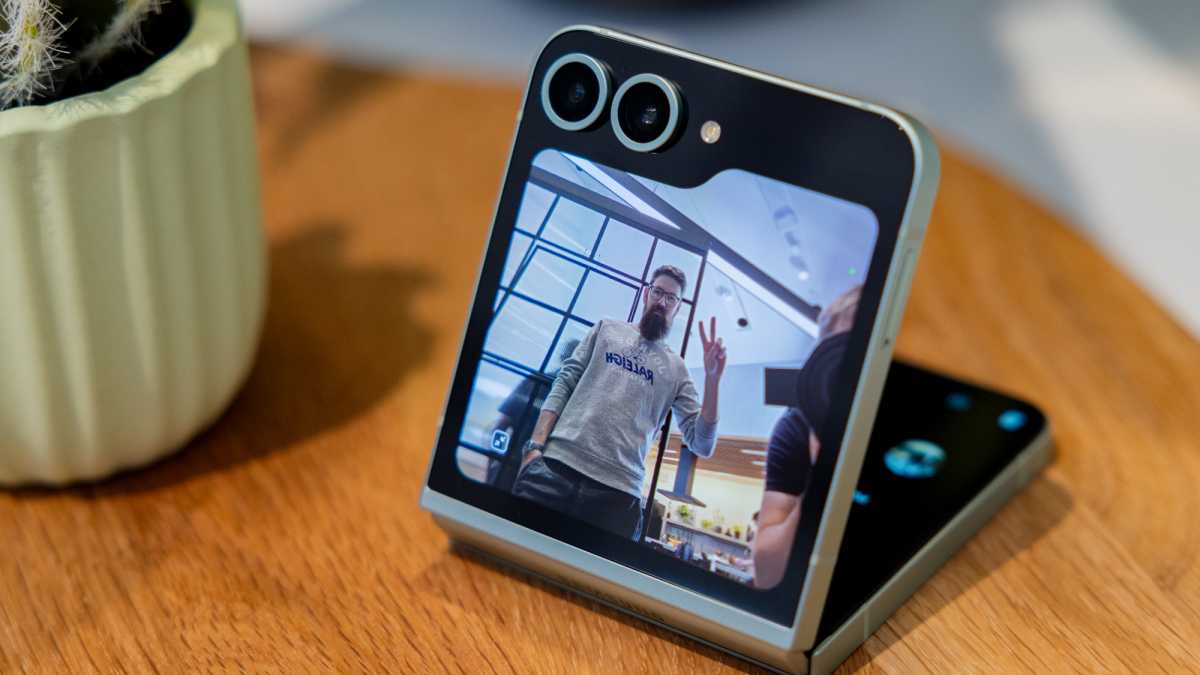Selfie cameras have been a thing on smartphones since the days of the iPhone 4 in 2010. But 14 years on, their quality still varies hugely.
Most of the best camera phones have strong front-facing cameras, yet many budget handsets and mid-range phones still struggle. Ultimately, the selfie lens is always inferior to the main rear one, which can be very frustrating.
However, one kind of phone emphatically solves that issue by using the rear cameras to take selfies. You guessed it: flip phones.
The modern foldable design allows you to fold the device in half, bringing the main lenses to the front. The cover screen can then be used as a viewfinder, making sure you get the best shot possible.
On devices with an ultrawide lens, you can switch to this camera and make sure everyone gets in the frame for group selfies.
This is something you might have seen during medal ceremonies at the 2024 Paris Olympics, where athletes are using the Galaxy Z Flip 6 to capture a ‘Victory Selfie’.

Samsung
This is a direct result of Samsung’s sponsorship of the competition, with every athlete having been gifted a special edition of the device. But it also makes a lot of sense.
On the Galaxy Z Flip 6, you can take cover screen selfies without unlocking the device, either by tapping the screen or holding your hand up (it gives you three seconds to get in position). The Motorola Razr 50 Ultra/Razr+ (2024), Samsung’s main flip phone rival, offers a very similar method.

Dominik Tomaszewski / Foundry
But with Samsung upgrading the Z Flip 6’s main camera to a 50Mp lens (near-identical to the one in the Galaxy S24 and S24+), it means you’re getting true flagship-quality images. For selfie lovers, or people who spend a lot of time vlogging, that makes a foldable flip phone the perfect choice.
However, are they a good option for managing screen time? I switched to the Z Flip 6 to find out.
Alternatively, learn more about the most popular flip phones in our reviews of the Samsung Galaxy Z Flip 6 and Motorola Razr 50 Ultra.














